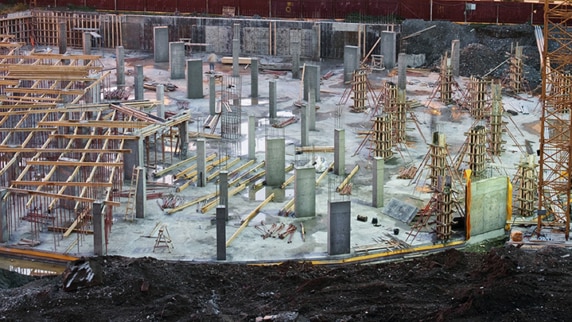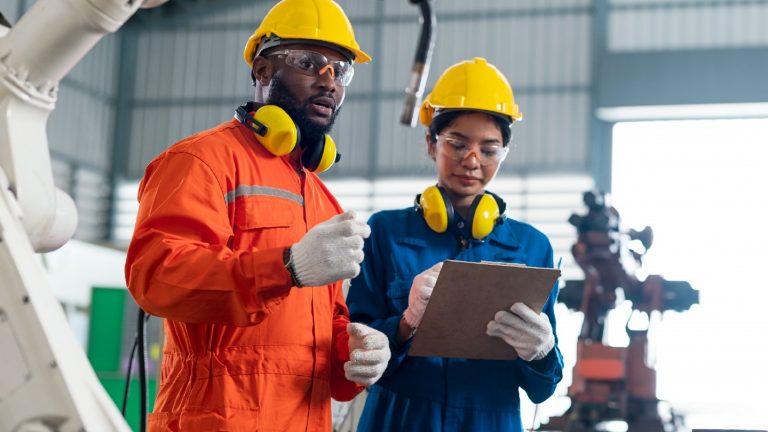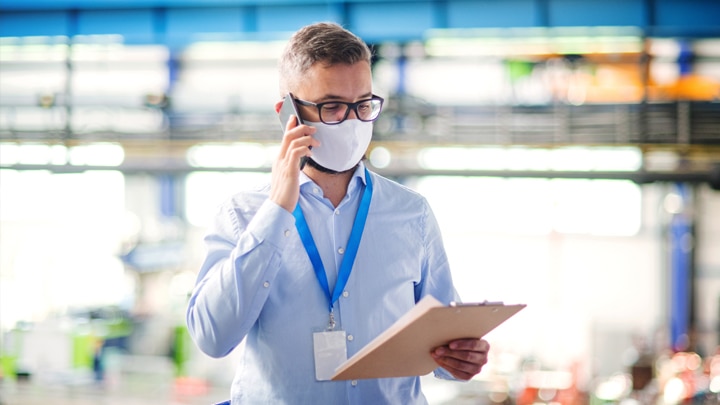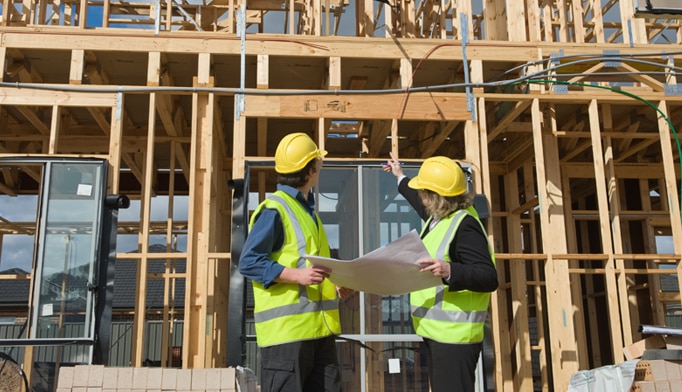
Today’s changing business environment amidst COVID-19 activity has led to unplanned construction site closures, and now planned re-openings. Shutting down mid-project is not easy and can create unique safety risks that need to be addressed before work fully stops. What’s more, reopening a site carries a slew of other considerations, especially in an environment with new and often changing federal, local, and state guidelines to help limit the spread of COVID-19, such as social distancing protocols and new handwashing and site cleaning recommendations.
Here we detail some guidelines to help support the safe reopening and potential future closure of job sites, in light of uncertainty around COVID-19 and its impact on construction over the coming weeks and months.
Returning to work on a suspended construction site
The COVID-19 pandemic has impacted construction sites across the country, and many have been placed on hold. Contractors returning to work on a suspended construction site may face unique hazards. Key areas to consider include:
Workforce and communication
Workforce and Communication: Address the needs of your workers. Your communication style and content could have a direct impact on the successful completion of the project. During the pre-planning process consider the Centers for Disease Control (CDC) / National Institute for Occupational Safety and Health (NIOSH) recommended practices that you will bring forward, as well as addressing mental health issues.
Fall protection
Fall protection systems may need to be inspected to ensure they will work effectively.
- Are floor hole covers in good condition and properly labeled?
- Are personal fall arrest anchorage points still acceptable?
- Should suspended scaffolding be re-inspected?
Public safety
Protecting the public from injury during construction is always a primary concern of any project team. During project restart planning and preparation, inspect and remove any loose or damaged objects from the project that could fall/fly and injure the public. Reestablish perimeter protection, traffic control, covered walkways, and lighting.
Temporary structures and infra-structure
Any temporary structures left in place will need to be inspected prior to starting up the project. Scaffolds, stair towers, and personnel hoists associated with the project should be inspected prior to use. Shoring or re-shoring should be inspected per the shoring engineers’ recommendations and drawings.
Structural integrity
It is important to inspect the structure to see if any degradation has occurred. Incomplete or unfinished structures should be evaluated prior to restart, such as structural steel, precast, duct runs, and pan decking systems.
Property protection
Protecting the structure under construction remains a priority, and security and fire protection will need to be reviewed.
- Does the project location still require the use of on-site security?
- Will fire prevention systems such as sprinklers, standpipes, and alarm systems need to be inspected prior to project restart?
Mold and occupational disease prevention
Rodents and insects may have infiltrated the site or water may have impacted the structure. Address any damage before startup. Investigate the following:
- Has any insect or rodent damage occurred? How will it be addressed?
- How will HVAC systems be restarted?
Major equipment
The safe restart of major equipment, such as cranes, is essential to a project. Consider the following:
- How will cranes be restarted safely?
- Will rigging need to be inspected prior to use?
Project records
Properly maintaining project records could have a direct impact on your ability to get the schedule back on track. Consider:
- Video documenting the site’s condition prior to startup.
- Re-inventorying all material and equipment.
Environmental risks
Environmental risks may have changed on a suspended site since shutdown. Be sure to assess the following:
- Possible mold growth and potential indoor air quality issues
- Leaks from previously installed piping
- Damage from vandalism; pipes, valves, tanks, etc.
- Dewatering contaminated rain water
- Unmanaged site runoff
Contingency plan
It is important to consider that the pandemic may require additional work suspension or site shutdown on a long term project. Consider reviewing your business continuity plan in anticipation of future disruptions.
Safe worksite closure considerations
To help protect your workers, the public, and your business, consider creating a shutdown plan focusing on the following key areas:
- Public safety: remove or secure all loose materials, tools, and equipment on open floors and roofs.
- Property protection: make sure the building envelope is watertight. If there is a need for additional protection, such as temporary drains, water diversions, etc., install them prior to site shutdown.
- Temporary structures: remove or secure any exterior scaffolds.
- Inclement weather conditions: establish a contingency plan addressing severe weather (hail/wind/flood) throughout the shutdown.
- Record retention: secure and maintain all contract documents, insurance records, and project logs in a safe, accessible location offsite.
For additional guidance, please review our construction site shutdown guide.
Partial shutdown guidance
If you are shifting to a partial shutdown with fewer on-site workers, consider these guidelines:
- If workers will be alone on the jobsite, make sure they are able to reach help in the event of an accident.
- Make sure the job can be done safely with limited workers on-site. Evaluate specific tasks, as well as the use of tools and equipment.
- Some job tasks require more than one person on-site. If this is the case, refer to local regulations on lone workers.
Your safety and well-being are our primary concern. These suggestions are general in nature, so please ensure that any activities you contemplate comply with all federal, state, and local COVID-19 orders impacting your facilities or operations as well as CDC guidelines for social distancing, hygiene, and other recommended best practices.
Related insights
This website is general in nature, and is provided as a courtesy to you. Information is accurate to the best of Liberty Mutual’s knowledge, but companies and individuals should not rely on it to prevent and mitigate all risks as an explanation of coverage or benefits under an insurance policy. Consult your professional advisor regarding your particular facts and circumstance. By citing external authorities or linking to other websites, Liberty Mutual is not endorsing them.



